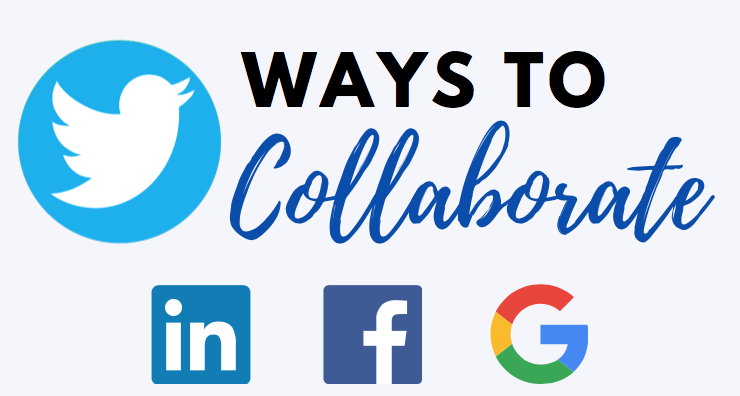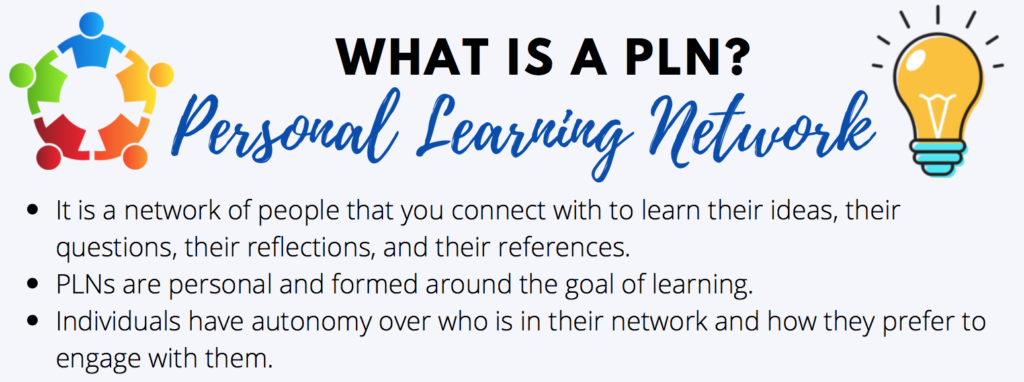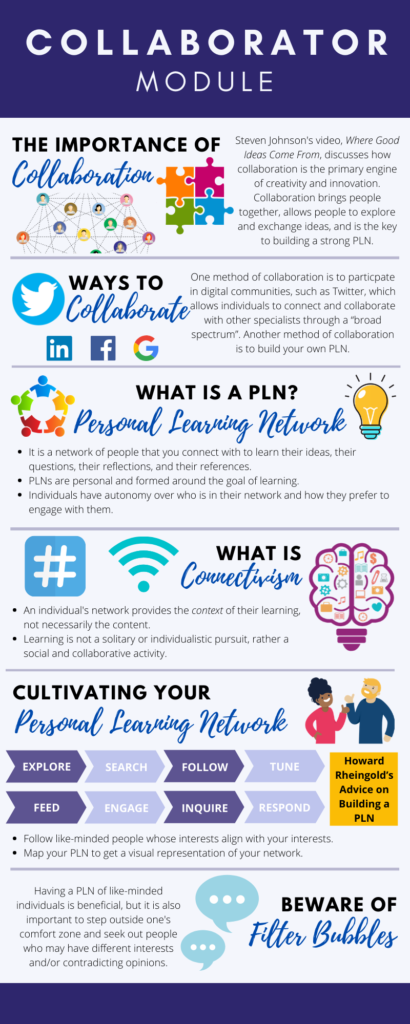I choose to create an infographic that focuses on the Collaborator Module. The overarching idea of this module is the importance of collaboration and building a strong PLN.

Steven Johnson’s video, Where Good Ideas Come From, emphasizes that collaboration is the foundation of creativity and innovation because it brings people together and provides them the opportunity to learn from one other through an exchange of ideas and knowledge. While I believe that collaboration is beneficial, I would argue that collaboration with the right people is even more rewarding. I view collaboration as a two-way avenue in which both individuals must contribute something of value.

This exchange of information does not necessarily need to occur at the same time. But to create a sustainable and valuable relationship, that give and take of knowledge must be shared and balanced. Collaboration can take place via digital communities such as Twitter or LinkedIn, or can take place within personal networks.
The module also explores the concept of PLNs (personal learning networks). Marc-André Lalande describes PLNs as a “group of people or organizations that you connect with in order to learn from their ideas, their questions, their reflections, and their references”. While PLNs are not limited to online interactions, that digital, cooperative, and global aspect of them is what draws people to them. PLNs offer individuals that open and inclusive environment to share and spread knowledge with one another. Moreover, individuals have autonomy over their network, so they can decide whom they wish to connect with and the degree of that engagement.

The concept of connectivism emerges from the conversation of PLNs. Connectivism is the idea that an individual’s network provides the context of learning, not necessarily the content. I agree with this theory because when you are part of a PLN, your perspective arguably becomes limited to the thoughts, ideas, and information shared within that network. Your PLN creates this invisible bubble around you and therefore, the information you seek will subconsciously hold a specific bias. For instance, if you are part of a PLN that favours education over travel, you may not necessarily see the other side of the argument that travel is also a form of learning and therefore just as important as traditional education.

This is why it is crucial to be aware of online filter bubbles. In his TedTalk, Beware Online “Filter Bubbles”, Eli Pariser explains that a filter bubble is essentially the unique universe of information that you live in online. Your filter bubble depends on who you are and what you do, but you don’t get to decide what gets in or see what gets edited out. That being said, while I think it’s useful to have a PLN that shares similar interests and opinions, it is important to break out of that bubble and seek people who may have different interests and opinions. You may not agree with those individuals, but at least you are aware and mindful of other opinions.

In terms of the digital tool itself, I enjoyed using Canva to create an infographic for this module. It was a very different experience compared to the first multimedia reflection, where I drew a sketchnote. Canva is a user-friendly platform and despite using the free version of the tool, I found the range of templates, images, fonts, and colours to be endless.
What I found interesting about Canva was the flexibility it offers with the templates – you can either use the pre-designed infographics exactly how they are and just fill in the required text boxes and insert a few images. Or you can experiment and alter the pre-designed template to really make it your own, which is what I did. Compared to a sketchnote, I found Canva to be slightly easier because you can easily delete, rearrange, or edit any aspect of your design, whereas, doing that with a sketchnote was difficult. Both tools are useful in their own unique ways – it’s a matter of figuring out which platform you believe would best convey your ideas!

